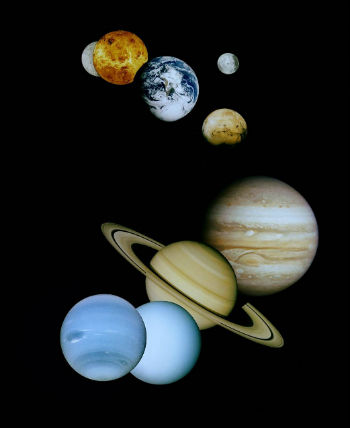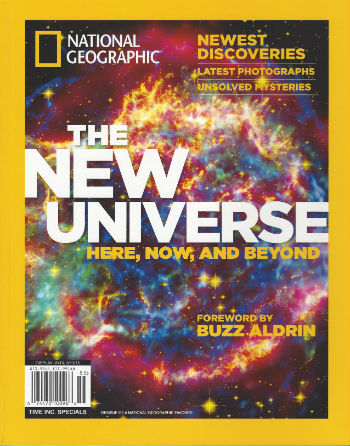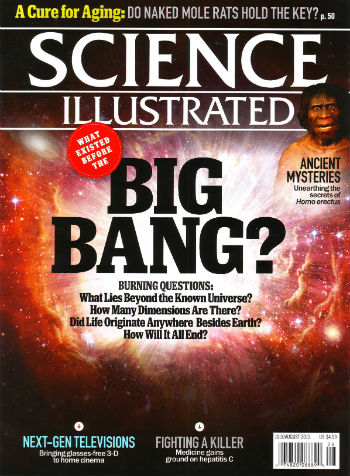Venus Still Rotates Backward – So What Might It Mean?
By Neil Earle
 This 1997 montage of planetary images was taken by spacecraft managed by NASA's Jet Propulsion Laboratory. Included are (from top to bottom) images of Mercury, Venus, Earth (and moon), Mars, Jupiter, Saturn, Uranus and Neptune. Click photo to enlarge.
This 1997 montage of planetary images was taken by spacecraft managed by NASA's Jet Propulsion Laboratory. Included are (from top to bottom) images of Mercury, Venus, Earth (and moon), Mars, Jupiter, Saturn, Uranus and Neptune. Click photo to enlarge.
Way back in 1970 I was supporting a Christian magazine that had an article with the intriguing title “Venus Rotates Backward” – a real grabber for me at the time.
The author asked in a slightly jocular manner why the planets should rotate forward (east to west) for that matter, and why are they all in the same plane of orbit as opposed to comets and asteroids that streak in continually?
Astronomer Fred Whipple labeled the retrograde motion of Venus an anomaly in planetary motion which “theories of planetary evolution must allow or account for…” The best explanation back in the 1960s was that some stellar body passed close enough to disturb Venus in its path. But the statistical evidence for such a theory defied the imagination, said the Christian writer.
The Nebular Hypothesis
The problem for scientific theory is that before the current Big Bang hypothesis came to prominence, the best explanation for the origins of the entire solar system was Kant’s “nebular hypothesis.” This postulated two galaxies or star systems coming close enough together to pull the planets and their moons out of the smaller system. Then, through gravitational forces, a smooth, orderly, predictable planetary orbital plane was established. All very neat and reasonable sounding according to the wisdom of 1970.
But Venus rotates backwards, undermining the neat underpinnings of the nebular theory.
 Scientists are hard-pressed to keep up with the startling developments pouring in from the cosmos.
Scientists are hard-pressed to keep up with the startling developments pouring in from the cosmos.
Now we know that additional moons circling other planets rotate backwards as well.
What is going on?
Even the Big Bang theory would have to explain the dilemma of how chunks of matters exploding out into space could settle into regular smooth orbits over time. This was all according to the working of interstellar evolutionary theory.
And there’s the rub. So many anomalies in the solar system have been cropping up since 1970 that the point our author raised 45 years ago still matters. National Geographic and Scientific American magazines and others bombard readers with such titles on a regular basis.
Not Haphazard?
It seems that no one single theory will account for the strangeness of our place in space, the inner solar system, where we have our existence.
The astronomers Payne-Gaposchkin and Haramundanis concluded decades ago that “our solar system…did not arise in a haphazard manner…Few topics have produced as many improvable theories…No conclusive solution has yet been reached.”
This is till true. Despite the spectacular claims of science editors in our daily papers and the assured pronouncements in school texts, the mysteries in our cosmos are many, and none more unsettling than theories of origins.
 The questions keep coming.
The questions keep coming.
The Colossians Proposal
In this context, Bible readers are familiar with the claims made about Jesus Christ in St. Paul’s Letter to the Colossians that “in him (Christ) all things hold together.” For centuries Christian theology has advanced the notion that we live in a wonderful but still unfinished creation, one that is “neutral” in its orientation to God by His design. This means that the material facts of the universe can be used to demonstrate God’s order and creative finesse or it can offer a picture of a dynamic creation with enough striange “anomalies” allowed to keep it moving forward…and to keep us guessing.
“Contingency” is the theological term. It means that the universe itself is not necessary and did not have to be the way it is but is dependent on God for its existence and might have been otherwise. In that sense the “anomalies” in nature cause us to reflect upon other alternatives for the cosmos taking shape.
The Bible says God calls all the stars by name, not one is missing from his account book. But stars are also forming and developing, exploding and colliding and the beat continues to go on to the utter fascination of those who study these things. On one level there is enough order and regularity to fly our astronauts to the moon but also enough unpredictability and “contingency” for hurricanes to come flying in leaving untold tragedy in their wake. All this keeps cosmologist and their theories “open” to further investigation and fresh conclusions. Or at least it should.
Perhaps it takes the silent, unseen intervention of a Super-Intellect (as some scientists themselves have posited) to keep it all running. Isaiah anticipated this when he asked “who created these? He who brings out their host by number…because he is strong in power not one is missing” (Isaiah 40:26). Is this the missing dimesnion in our theories of origins? Perhaps the Colossians Factor should be added to the quest for origins to account for all sides of this continually fascinating question.
It’s a thought.